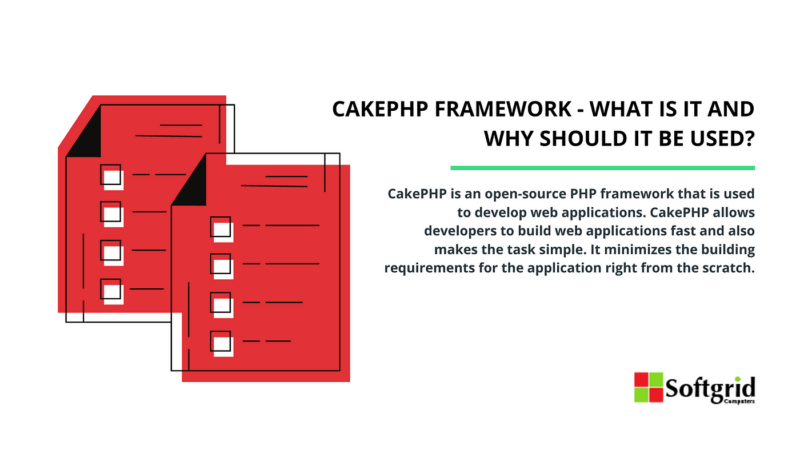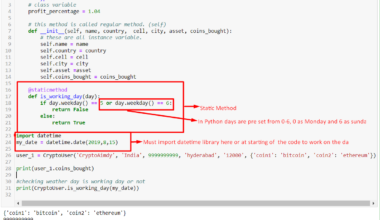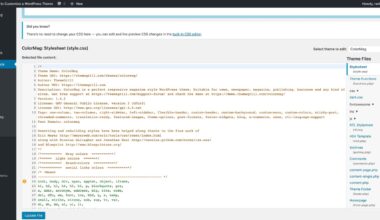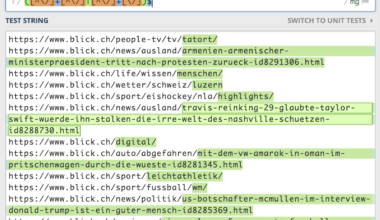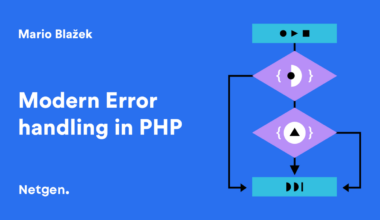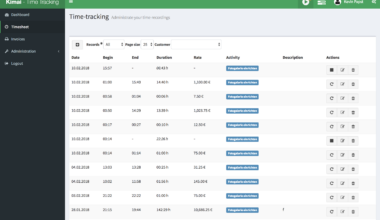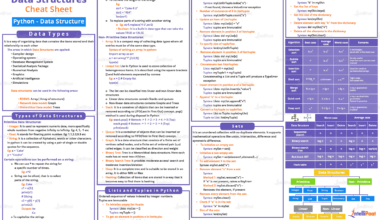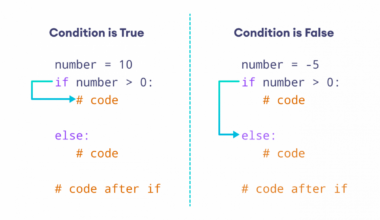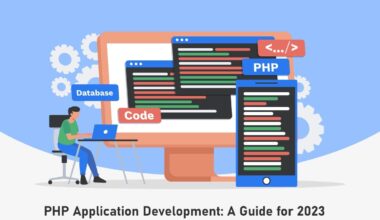Introduction to PHP and CakePHP
As a web developer, I have been working with PHP for the past few years, and one of the most powerful PHP frameworks that I have used is CakePHP. PHP is a server-side scripting language that is widely used for web development. It is an open-source language that is easy to learn and use for beginners. CakePHP, on the other hand, is a PHP framework that is built on the MVC (Model-View-Controller) architecture, making it a popular choice for rapid application development.
CakePHP is designed to make web development faster and easier, allowing developers to create complex web applications with minimal coding. This framework provides a standardized way of building web applications, making it easier for developers to maintain and update their code. The framework also comes with a set of built-in tools and features that make web development faster and more efficient.
One of the key features of CakePHP is its ability to generate code automatically, which saves a lot of time and effort for developers. The framework also comes with a set of pre-built libraries and components that can be easily integrated into web applications. These libraries and components include authentication, security, and email handling, among others.
Another advantage of using CakePHP is its strong community support. The framework has a large and active community of developers who regularly contribute to the development of the framework. This means that developers can easily find help and support when they encounter issues with their code.
In summary, PHP and CakePHP are powerful tools for rapid application development. They provide developers with the ability to create complex web applications quickly and efficiently. With its built-in tools and features, CakePHP makes web development faster and easier, while its strong community support ensures that developers can easily find help and support when they need it.
Advantages of Rapid Application Development
Rapid application development (RAD) is a software development methodology that emphasizes fast prototyping and iterative development. RAD enables developers to create applications quickly and efficiently, reducing development time and costs. Here are some of the advantages of using RAD for your next project:
1. Speed
RAD enables developers to create applications quickly and efficiently, reducing development time and costs. With the help of RAD tools and frameworks like CakePHP, developers can create prototypes in a matter of hours, instead of days or weeks. This allows developers to get feedback from stakeholders and users early on in the development process, which can help to identify and resolve issues quickly.
2. Flexibility
RAD is a flexible development methodology that can be adapted to meet the needs of different projects. RAD enables developers to make changes to the application quickly and easily, without having to start from scratch. This means that developers can respond to changing requirements and feedback from stakeholders and users, without having to go back to the drawing board.
3. Collaboration
RAD emphasizes collaboration between developers, stakeholders, and users. RAD tools and frameworks like CakePHP enable developers to work together in real-time, sharing code, and collaborating on development tasks. This can help to improve communication, reduce misunderstandings, and ensure that everyone is on the same page.
4. Quality
RAD enables developers to create high-quality applications quickly and efficiently. With the help of RAD tools and frameworks like CakePHP, developers can automate testing and quality assurance tasks, ensuring that the application is bug-free and meets the required quality standards.
5. Cost-Effective
RAD is a cost-effective development methodology that can help to reduce development time and costs. With the help of RAD tools and frameworks like CakePHP, developers can create applications quickly and efficiently, reducing the overall development costs. This can be particularly beneficial for small businesses and startups that have limited resources.
In conclusion, RAD is a powerful software development methodology that can help developers create high-quality applications quickly and efficiently. With the help of RAD tools and frameworks like CakePHP, developers can prototype, iterate, and deploy applications faster and more efficiently, while reducing development costs and improving collaboration.
CakePHP Framework Features
CakePHP comes with a range of features that make it a popular choice for rapid application development. Some of the key features of CakePHP include:
1. MVC Architecture
CakePHP is built on the Model-View-Controller (MVC) architecture, which provides a standardized way of organizing code. The MVC architecture separates the application’s data, user interface, and control logic into separate components, making it easier to maintain and update code.
2. Code Generation
CakePHP’s code generation feature allows developers to generate code automatically, saving a lot of time and effort. With the help of code generation, developers can quickly create models, controllers, and views, reducing the amount of coding required for the application.
3. Built-in Tools and Libraries
CakePHP comes with a range of built-in tools and libraries that can be easily integrated into web applications. These tools and libraries include email handling, authentication, security, and database access, among others. Using these built-in tools and libraries can save developers a lot of time and effort, as they do not have to build these features from scratch.
4. Database Access
CakePHP’s database access feature allows developers to access databases easily and efficiently. The framework supports a range of database systems, including MySQL, PostgreSQL, and SQLite, among others. Developers can use CakePHP’s built-in database access layer to perform database operations, such as inserting, updating, and deleting records.
5. Validation
CakePHP’s validation feature allows developers to validate user input quickly and efficiently. The framework comes with a range of built-in validation rules, such as email validation, date validation, and numeric validation, among others. Developers can also create their own custom validation rules to suit their application’s needs.
6. Internationalization and Localization
CakePHP’s internationalization and localization features make it easy to build applications that support multiple languages and regions. The framework provides built-in support for internationalization and localization, allowing developers to translate their application’s content into different languages easily.
In summary, CakePHP’s features make it a powerful tool for rapid application development. With its MVC architecture, code generation, built-in tools and libraries, database access, validation, and internationalization and localization features, CakePHP makes web development faster, easier, and more efficient.
Common PHP and CakePHP Development Challenges
Like any programming language or framework, PHP and CakePHP come with their own set of development challenges. Here are some of the common challenges that developers may face when working with PHP and CakePHP:
1. Security
Web application security is a critical concern for developers, and PHP and CakePHP are no exception. Developers need to ensure that their code is secure from common web application vulnerabilities, such as SQL injection, cross-site scripting (XSS), and cross-site request forgery (CSRF). To address these concerns, developers can use CakePHP’s built-in security features, such as input validation and output escaping, to help prevent these vulnerabilities.
2. Performance
PHP and CakePHP can be resource-intensive, especially when working with large datasets or complex applications. To optimize performance, developers need to ensure that their code is efficient and well-optimized. This includes using caching mechanisms to reduce database queries and optimizing code for faster execution.
3. Compatibility
PHP and CakePHP are constantly evolving, and developers need to ensure that their code is compatible with the latest versions of these technologies. This includes keeping up-to-date with the latest features and updates, as well as ensuring that their code is compatible with different web browsers and operating systems.
4. Debugging
Debugging code can be a time-consuming process, especially when working with complex applications. To make debugging easier, developers can use CakePHP’s built-in debugging tools, such as error logging and stack traces, to identify and fix issues quickly.
5. Scalability
As web applications grow in size and complexity, scalability becomes an important concern for developers. To ensure that their applications can handle increased traffic and user loads, developers need to design their code with scalability in mind. This includes using caching mechanisms, optimizing database queries, and designing code that can be easily scaled horizontally or vertically.
In conclusion, developers may encounter several challenges when working with PHP and CakePHP, including security, performance, compatibility, debugging, and scalability. However, with the help of CakePHP’s built-in tools and features, developers can overcome these challenges and create high-quality web applications quickly and efficiently. By keeping up-to-date with the latest developments in PHP and CakePHP, developers can ensure that their code is secure, optimized, and scalable.
Tips for Efficient Development Using CakePHP
CakePHP is a powerful framework for rapid application development, but like any tool, it requires some skill and finesse to use effectively. Here are some tips for efficient development using CakePHP:
1. Use CakePHP’s Built-in Tools and Features
CakePHP comes with a range of built-in tools and features that can make web development faster and easier. These tools and features include code generation, database access, validation, and security, among others. By using these built-in tools and features, developers can save time and effort, and focus on creating high-quality applications.
2. Follow the MVC Architecture
CakePHP is built on the Model-View-Controller (MVC) architecture, which provides a standardized way of organizing code. By following the MVC architecture, developers can create code that is easier to maintain and update. This architecture separates the application’s data, user interface, and control logic into separate components, making it easier to work with.
3. Use Plugins to Extend Functionality
CakePHP’s plugin system allows developers to extend the functionality of the framework easily. Plugins are self-contained packages of code that can be easily integrated into web applications. By using plugins, developers can add new features and functionality to their applications quickly and efficiently.
4. Optimize Database Queries
Database queries can be a significant performance bottleneck for web applications. To optimize performance, developers should optimize their database queries by reducing the number of queries and optimizing the queries themselves. CakePHP’s built-in database access layer can help developers optimize their queries and reduce the number of queries required.
5. Use Caching Mechanisms
Caching can significantly improve web application performance by reducing the number of queries required and improving response times. CakePHP provides built-in caching mechanisms that can be used to cache database queries, view files, and other parts of the application. By using caching mechanisms, developers can improve the performance of their applications and reduce server load.
6. Write Clean and Readable Code
Clean and readable code is essential for efficient development using CakePHP. Developers should write code that is easy to read and understand, using descriptive variable names and comments where necessary. By writing clean and readable code, developers can make it easier to maintain and update their applications.
In conclusion, CakePHP is a powerful tool for rapid application development, but it requires some skill and finesse to use effectively. By using CakePHP’s built-in tools and features, following the MVC architecture, using plugins, optimizing database
Final Thoughts on PHP and CakePHP for Rapid Development
In conclusion, PHP and CakePHP are powerful tools for rapid application development. These tools provide developers with the ability to create complex web applications quickly and efficiently. With the help of CakePHP’s built-in tools and features, developers can prototype, iterate, and deploy applications faster and more efficiently, while reducing development costs and improving collaboration.
Furthermore, RAD enables developers to create high-quality applications quickly and efficiently. RAD tools and frameworks like CakePHP enable developers to prototype, iterate, and deploy applications faster and more efficiently, while reducing development costs and improving collaboration.
However, like any programming language or framework, PHP and CakePHP come with their own set of challenges. Security, performance, compatibility, debugging, and scalability are some of the common challenges that developers may face when working with PHP and CakePHP. It is important for developers to be aware of these challenges and use the built-in tools and features of CakePHP to address them.
To use CakePHP efficiently, developers should follow the MVC architecture, use plugins to extend functionality, optimize database queries, use caching mechanisms, and write clean and readable code. By following these tips, developers can create high-quality applications quickly and efficiently, while reducing development costs and improving collaboration.
Overall, PHP and CakePHP are valuable tools for developers who want to create complex web applications quickly and efficiently. With its powerful features and active community support, CakePHP is a popular choice for rapid application development. By following best practices and using the built-in tools and features of CakePHP, developers can create high-quality applications that meet the needs of their users and stakeholders.
